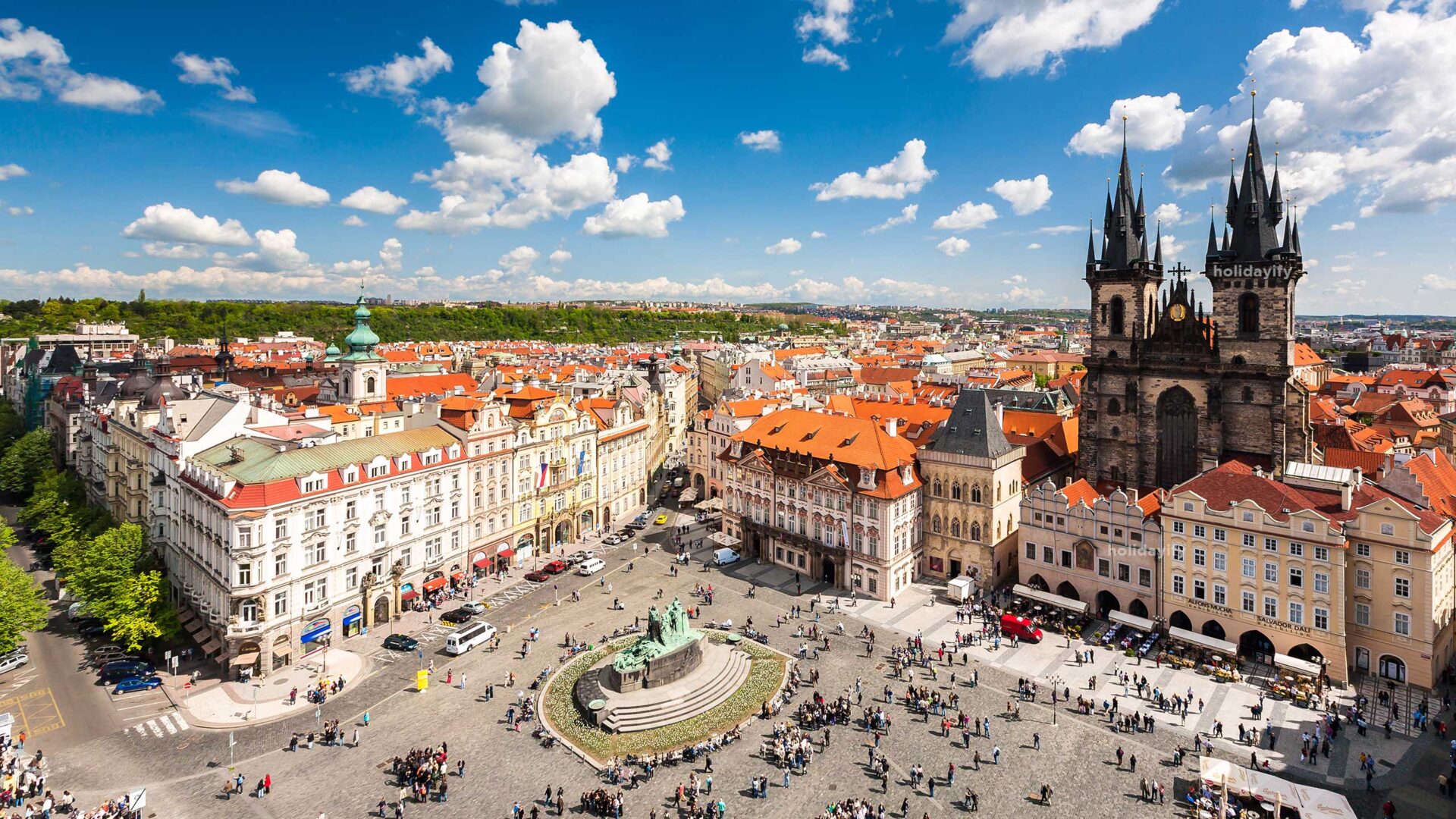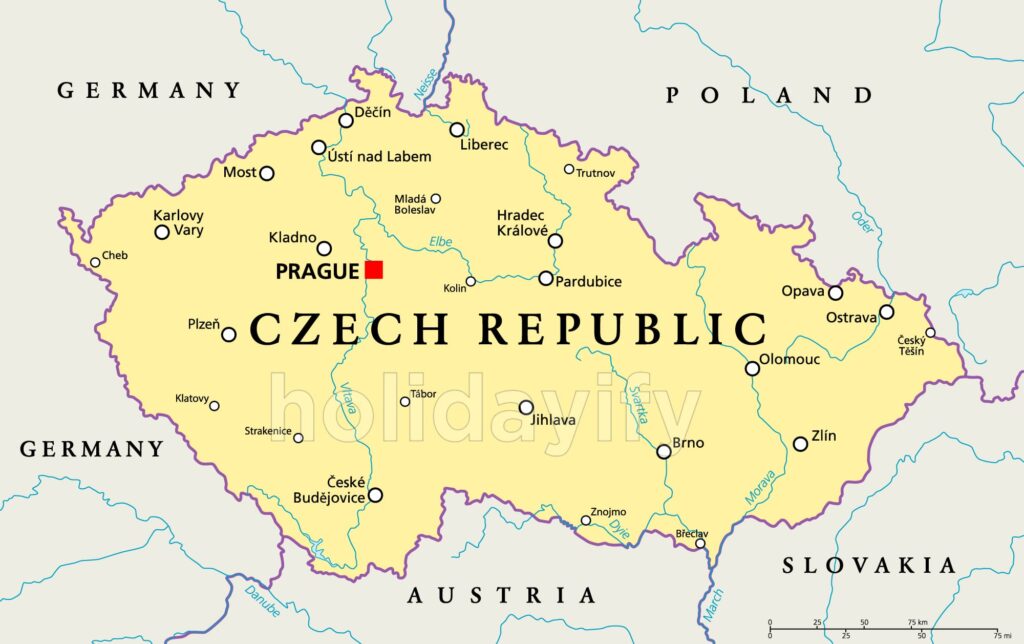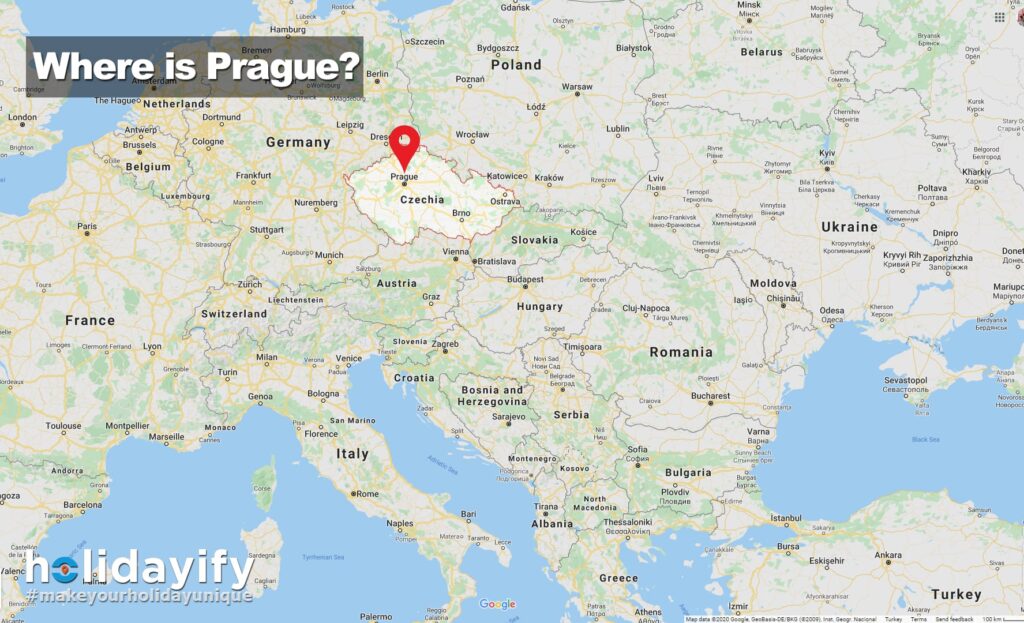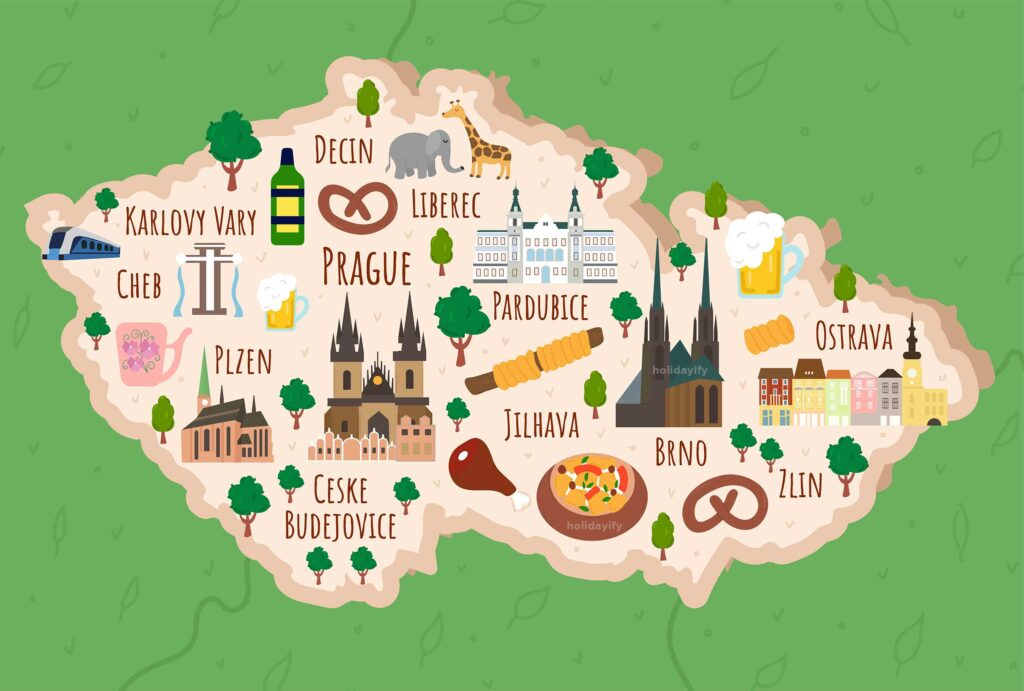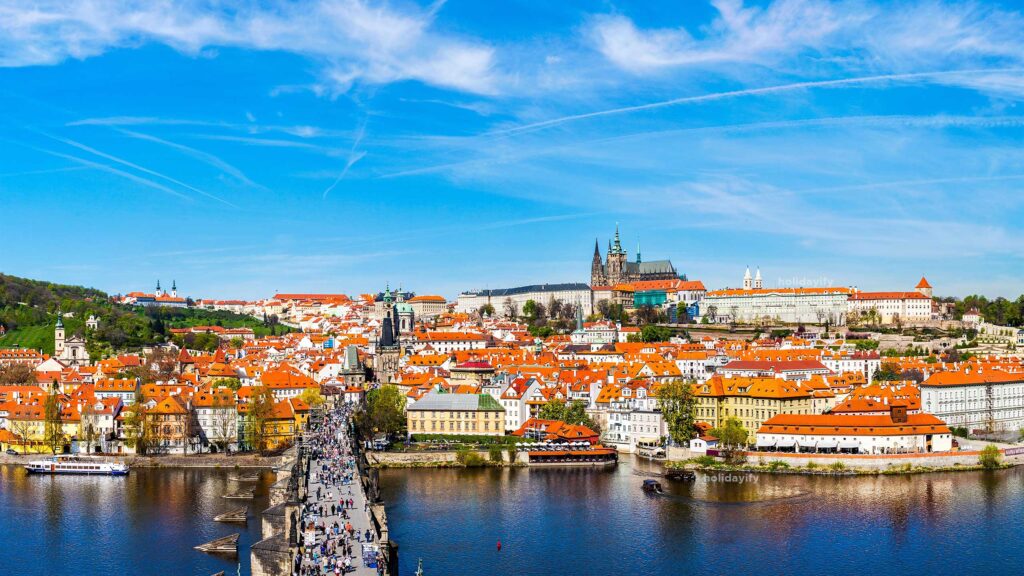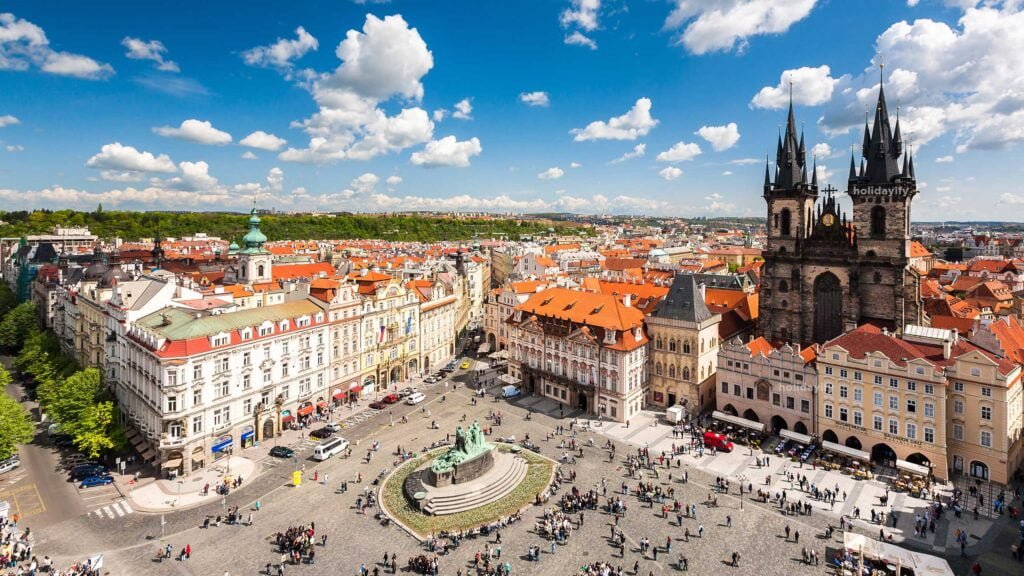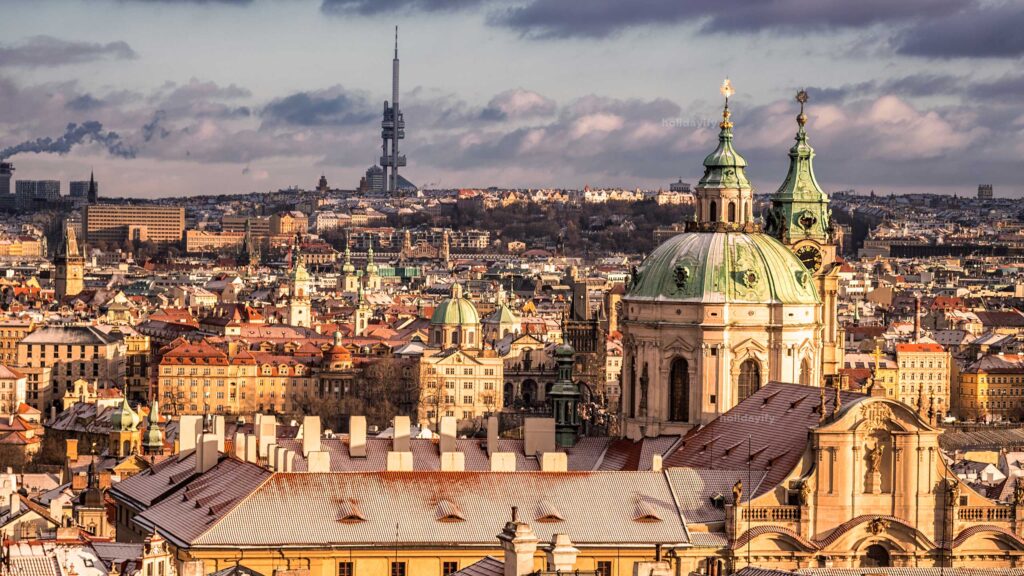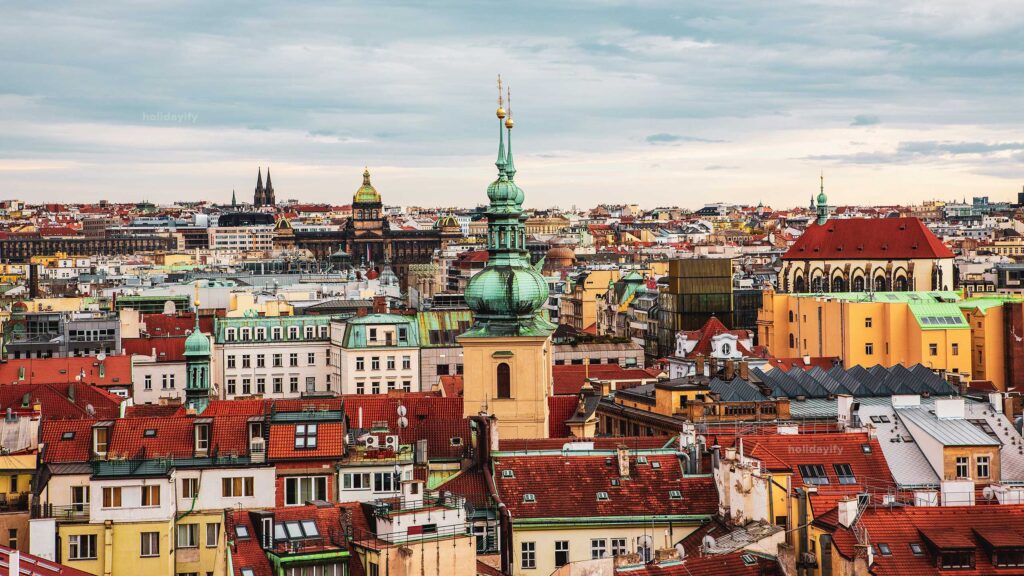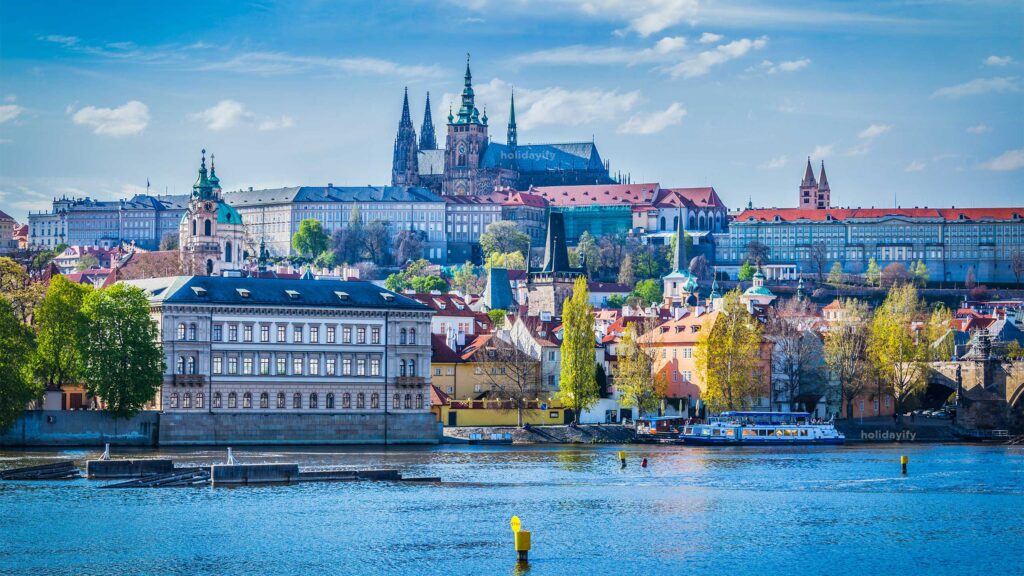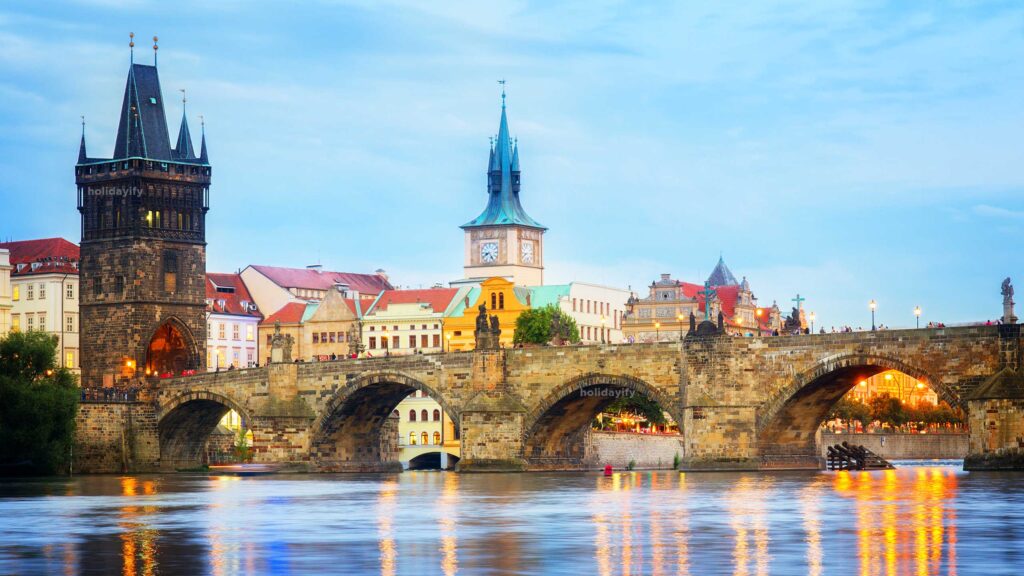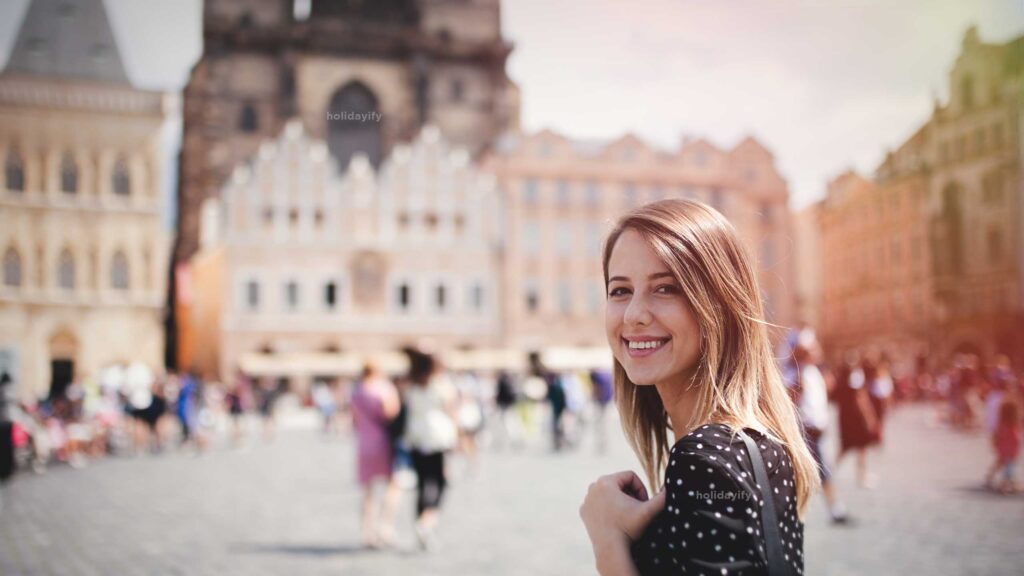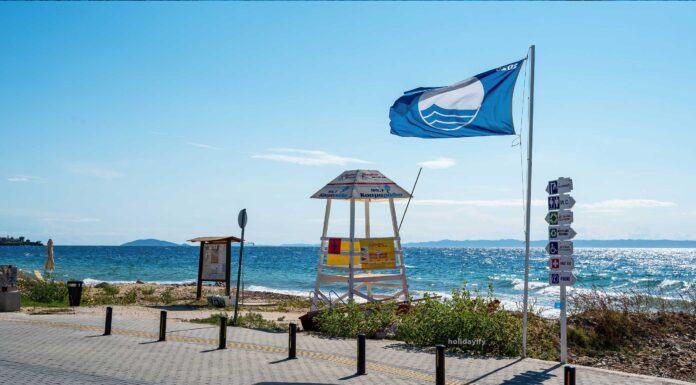Welcome to our traveler’s guide on exploring Prague’s location in Europe! Nestled in the heart of Central Europe, Prague is a city that effortlessly blends history, culture, and modernity. From its stunning architecture to its vibrant arts scene and delicious cuisine, Prague has something for every type of traveler. Join us as we dive into all the fascinating aspects that make this city a must-visit destination. Let’s unravel the enchanting secrets of where Prague sits on the European map!
Where is Prague (Praha)
The Czech Republic is divided into 14 political regions and three geographical regions: Bohemia, Moravia and Czech Silesia. Prague is located in Bohemia. You may also see where is Prague on the map of Czech Republic.
Located at the heart of Europe, Prague is the capital city of the Czech Republic. Considered one of Europe’s most beautiful cities, it also serves as a major economic and cultural hub for the country. With a history spanning over 1,000 years, Prague’s architecture is a testament to its past and present as a thriving urban center in Bohemia.
Where is Czech Republic
The Czech Republic bordered by Austria to the south, Germany to the west, Poland to the northeast and Slovakia to the southeast. So it means Czech Republic located in the heart of Europe. Where is Prague located in Czech Republic? It’s located in Bohemia which is the western half of the country.
Exploring Prague’s Location in Europe: A Traveler’s Guide
Satellite View and Map of the City of Prague
When it comes to exploring Prague’s location in Europe, one can’t help but marvel at its strategic position along the banks of the Vltava River. The city is situated in the heart of Central Europe, making it a convenient hub for travelers looking to explore neighboring countries such as Germany, Austria, and Slovakia.
Overview of Prague
Prague, the capital city of Czechia, boasts a rich history dating back over a thousand years. With its well-preserved medieval architecture and charming cobblestone streets, Prague exudes an old-world charm that captivates visitors from around the globe.
History of Prague
From being the seat of Bohemian kings to surviving centuries of political upheaval and wars, Prague’s history is as fascinating as it is complex. The city’s past is reflected in its diverse architectural styles – from Gothic cathedrals to Baroque palaces – each telling a unique story.
Geography of Prague
Surrounded by rolling hills and lush greenery, Prague offers breathtaking views from every corner. The iconic red rooftops against the backdrop of picturesque landscapes make for postcard-perfect vistas that are sure to leave you spellbound.
Administration and Government
As the political center of Czechia, Prague serves as the seat of government and houses various administrative offices. Understanding how this bustling metropolis operates adds another layer to your exploration journey through this historic city.
Satellite View and Map of the City of Prague
When planning a trip to Prague, it’s essential to familiarize yourself with the city’s layout and geography. By exploring a satellite view or map of Prague, travelers can gain valuable insights into the city’s topography and landmarks.
The Vltava River gracefully winds its way through the heart of Prague, dividing the city into two distinct regions: Lesser Town (Mala Strana) and Old Town (Stare Mesto). The iconic Charles Bridge connects these historic areas, offering breathtaking views of Prague Castle perched atop Hradcany Hill.
Navigating through Prague’s cobblestone streets reveals an architectural marvel blending Gothic, Baroque, and Art Nouveau styles. From the majestic Astronomical Clock in Old Town Square to the serene gardens of Petrin Hill, every corner showcases Prague’s rich history and culture.
Whether you’re strolling along Wenceslas Square or admiring the intricate facades of Vysehrad Fortress, exploring Prague from a bird’s eye view provides a captivating perspective on this enchanting European gem.
Overview of Prague
Nestled in the heart of Europe, Prague holds a rich tapestry of history and culture. Known as the “City of a Hundred Spires,” its stunning architecture tells tales of centuries gone by. From the iconic Charles Bridge to the enchanting Prague Castle, every corner exudes charm.
The Vltava River meanders through the city, adding to its picturesque allure. Cobblestone streets lead you on a journey through time, where Gothic cathedrals stand alongside Baroque palaces.
Prague’s vibrant energy is palpable – bustling squares are filled with street performers and cozy cafes invite you to savor traditional Czech cuisine. The city’s blend of old-world charm and modern flair creates a unique ambiance that captivates visitors from around the globe.
With its lively arts scene, thriving nightlife, and welcoming locals, Prague beckons travelers to immerse themselves in its timeless beauty.
History of Prague
Prague’s history is a tapestry woven with centuries of culture and tradition. The city, founded around the 9th century, has witnessed the rise and fall of empires, shaping its character into what it is today. From being a seat of power for Bohemian kings to enduring wars and revolutions, Prague has stood the test of time.
Over the years, Prague became an important political and cultural hub in Central Europe. It was under Charles IV’s rule in the 14th century that Prague blossomed into a thriving capital with stunning Gothic architecture like St. Vitus Cathedral and Charles Bridge.
The Hussite Wars in the 15th century marked a turning point as religious conflicts reshaped Prague’s landscape. Later on, during the Habsburg Monarchy era, Prague flourished once again as an artistic center attracting renowned figures like Mozart and Kafka.
In more recent times, Prague experienced tumultuous events such as World War II and communist rule before emerging as a vibrant European capital post-1989 Velvet Revolution. Today, visitors can explore this rich historical legacy through its well-preserved landmarks dotted throughout the cityscape.
Geography of Prague
Nestled in the heart of Central Europe, Prague, the capital city of the Czech Republic, boasts a unique geography that blends historical charm with natural beauty. The city is divided by the Vltava River, which flows through its center and adds to its picturesque appeal.
Prague’s landscape is characterized by rolling hills and lush greenery, offering stunning panoramic views from various vantage points across the city. The iconic Prague Castle sits atop one such hill, overlooking the red-roofed buildings below.
The city’s cobblestone streets wind their way through enchanting neighborhoods, each with its own distinct character and architectural style. From the medieval Old Town to the bohemian district of Žižkov, Prague’s geography tells a story of centuries past.
Surrounded by wooded areas and parks like Petřín Hill and Stromovka Park, Prague provides ample opportunities for outdoor activities and relaxation amidst nature. Whether exploring historic sites or enjoying a leisurely stroll along the riverbanks, Prague’s geography sets the stage for an unforgettable travel experience.
Administration and Government
Prague, the capital city of the Czech Republic, operates under a unique administrative system. The city is divided into several districts, each with its local council responsible for managing affairs at the neighborhood level. The Mayor of Prague holds significant authority and plays a crucial role in overseeing the city’s administration.
The City Hall of Prague serves as the central hub for governance and decision-making processes. It houses various departments that handle matters related to urban planning, infrastructure development, public services, and cultural initiatives. The municipal government works tirelessly to ensure efficient functioning and sustainable growth within the city.
Prague’s administrative structure reflects a blend of historical tradition and modern governance practices. As an important European capital, Prague continues to evolve its administrative systems to meet the demands of a dynamic urban landscape while preserving its rich cultural heritage.
Demographics and Culture
Prague, the capital of the Czech Republic, boasts a rich tapestry of demographics and culture that contribute to its vibrant atmosphere. The city is home to approximately 1.3 million residents, with a diverse population comprising Czechs, expatriates, and international communities.
The cultural landscape of Prague is as varied as its inhabitants. From historic landmarks like Prague Castle and Charles Bridge to modern art galleries and theaters, there’s something for every cultural enthusiast. The city hosts numerous music festivals, theater performances, and art exhibitions throughout the year.
Czech culture is deeply rooted in traditions such as folk music, dance, literature, and cuisine. Visitors can immerse themselves in local customs by attending traditional events like Easter markets or tasting authentic Czech dishes like goulash or trdelník.
With a mix of historical heritage and contemporary influences shaping its demographic makeup and cultural scene, Prague truly offers a unique experience for travelers seeking to explore the intersection of tradition and modernity in Europe.
Economy and Tourism
Prague’s economy is vibrant and diverse, with a mix of traditional industries like manufacturing and modern sectors such as technology and finance contributing to its growth. The city has seen significant development in recent years, attracting both local and foreign investors looking to capitalize on its strategic location in the heart of Europe.
Tourism plays a crucial role in Prague’s economy, with millions of visitors flocking to the city each year to experience its rich history, stunning architecture, and vibrant culture. From exploring the iconic Prague Castle to wandering through the charming streets of Old Town, tourists are spoiled for choice when it comes to attractions.
The tourism industry supports a wide range of businesses in Prague, including hotels, restaurants, souvenir shops, tour operators, and transportation services. The city’s reputation as a top destination for travelers from around the world continues to drive economic growth and create job opportunities for locals.
With its blend of historic charm and modern amenities, Prague remains a must-visit destination for anyone looking to immerse themselves in European culture while enjoying all the comforts of a thriving urban center.
Education and Science Centers
Education and science play a significant role in Prague, shaping the city’s intellectual landscape. With a rich history of academic excellence, Prague is home to several renowned universities and research institutions. The Charles University, founded in 1348, is one of the oldest universities in Europe and continues to be a hub for cutting-edge research.
In addition to its prestigious universities, Prague boasts numerous science centers that foster innovation and discovery. The Czech Academy of Sciences leads groundbreaking research across various disciplines, contributing to global scientific advancements.
Prague’s commitment to education and scientific development is reflected in its state-of-the-art facilities and collaborations with international institutions. Students and researchers from around the world are drawn to Prague for its vibrant academic community and opportunities for scholarly growth.
Education and Science Centers in Prague contribute significantly not only to the city’s intellectual capital but also to global knowledge advancement.
Transportation in Prague
Navigating Prague is a breeze with its efficient and well-connected transportation system. The city boasts an extensive network of trams, buses, and the metro, making it easy for travelers to explore every corner of this charming destination. The metro consists of three lines that cover the main areas of Prague, while the tram system offers a scenic way to travel through the city’s historical streets.
For those looking for a more eco-friendly option, biking around Prague is also a popular choice. With designated bike lanes and rental services available throughout the city, cyclists can enjoy sightseeing at their own pace. Taxis are another convenient mode of transport in Prague, providing quick and hassle-free rides for visitors who prefer door-to-door service.
Getting around Prague is simple and convenient thanks to its diverse transportation options catering to all types of travelers.
Sport and International Relations
Prague boasts a vibrant sports scene, with a strong emphasis on ice hockey and football. The city is home to several professional teams that compete at national and international levels, drawing in passionate fans from all over the world.
International relations play a significant role in Prague’s sporting events, as the city frequently hosts various international competitions and tournaments. These events not only showcase the city’s top-notch sporting facilities but also promote cultural exchange and collaboration among nations.
Prague’s sports diplomacy extends beyond competitions, fostering connections with other countries through friendly matches, training programs, and joint initiatives. Such interactions help strengthen diplomatic ties while promoting mutual understanding and respect among diverse cultures.
Sport serves as a powerful tool for building bridges between nations and fostering positive relationships on an international scale within Prague’s dynamic landscape.
Main Attractions and Cuisine
When exploring Prague, you’ll find a plethora of main attractions that showcase the city’s rich history and culture. One highlight is the iconic Prague Castle, a stunning complex that includes St. Vitus Cathedral and the Old Royal Palace. Take a leisurely stroll across the picturesque Charles Bridge, adorned with statues of saints and offering breathtaking views of the Vltava River.
For art enthusiasts, don’t miss out on visiting the Lennon Wall covered in colorful graffiti inspired by John Lennon and messages of peace. The Astronomical Clock in Old Town Square is another must-see marvel dating back to medieval times.
When it comes to cuisine, Prague offers a delectable array of dishes to tantalize your taste buds. Indulge in traditional Czech fare like goulash, roast pork with dumplings, or savory potato soup served in bread bowls. Pair your meal with world-renowned Czech beer for an authentic dining experience.
Exploring Prague’s culinary scene is not just about hearty meals but also about satisfying your sweet tooth with delightful pastries like trdelník (chimney cake) or palacinky (Czech pancakes) filled with jam or Nutella. Dive into the vibrant food markets scattered throughout the city to sample local treats and immerse yourself in Prague’s gastronomic delights.
Public Universities and Arts Academies
When it comes to education and the arts, Prague offers a rich landscape of public universities and arts academies. The Charles University, founded in 1348, is one of the oldest universities in Europe and boasts a prestigious reputation for its historic significance and academic excellence.
Another prominent institution is the Academy of Performing Arts in Prague, known for its exceptional programs in theatre, film, music, and dance. Students from around the world come to study at this renowned academy that nurtures creativity and talent.
The Academy of Fine Arts in Prague is another notable establishment focusing on visual arts including painting, sculpture, and architecture. It serves as a hub for aspiring artists seeking to hone their skills under the guidance of experienced mentors.
Prague’s commitment to higher education and artistic development shines through these institutions that cultivate innovation and creativity among students pursuing their passions in various fields.
Events and Twin Towns
Events and Twin Towns are integral to Prague’s vibrant cultural scene. Throughout the year, the city hosts a variety of festivals, concerts, and exhibitions that showcase its rich heritage and contemporary arts. From the famous Prague Spring International Music Festival to the lively Czech Beer Festival, there is always something exciting happening in this dynamic city.
Prague is also twinned with several other cities around the world, fostering international relationships and cultural exchanges. Some of Prague’s twin towns include Paris in France, Seoul in South Korea, and Moscow in Russia. These partnerships allow for collaboration in various fields such as education, business, and tourism.
Attending events in Prague offers visitors a unique opportunity to immerse themselves in the local culture while also celebrating global connections through its twin town relationships. Whether you’re exploring traditional folklore performances or enjoying modern art installations, there’s always an event to pique your interest in this cosmopolitan city.
Culture and Society in Prague
Culture and society in Prague are deeply intertwined, reflecting a rich history and diverse influences. The city is renowned for its vibrant arts scene, with numerous galleries, theaters, and music venues showcasing both traditional and contemporary works. From classical concerts at the iconic Rudolfinum to cutting-edge exhibitions at DOX Centre for Contemporary Art, Prague offers a dynamic cultural experience.
Prague’s residents take pride in their heritage, preserving centuries-old traditions while embracing modern innovations. Visitors can immerse themselves in Czech culture through local festivals like the Prague Spring International Music Festival or explore the city’s literary legacy at Kafka’s House. The Czech Republic’s strong emphasis on education and intellectual pursuits also shapes its societal values, fostering a community that values creativity and critical thinking.
In terms of society, Prague is known for its welcoming atmosphere towards tourists from around the world. Despite being a bustling metropolis, the city maintains a sense of charm and intimacy that resonates with locals and visitors alike. Whether strolling through historic neighborhoods like Mala Strana or enjoying an evening in one of Prague’s cozy pubs, it’s easy to see why this vibrant capital captures the hearts of all who visit.
Climate Insights
Prague experiences a temperate continental climate with four distinct seasons. Summers are warm and pleasant, with average temperatures ranging from 20-25°C. It’s the perfect time to explore the city’s parks and outdoor cafes. Autumn brings cooler weather, vibrant foliage, and a cozy atmosphere ideal for strolling through historic neighborhoods like Mala Strana.
Winters in Prague can be cold, with temperatures often dropping below freezing. Snowfall adds a magical touch to the cityscape, creating picturesque scenes around iconic landmarks like Charles Bridge and Prague Castle. Spring is a beautiful time to visit as flowers bloom throughout the city’s gardens and parks while temperatures start to rise again.
It’s essential to pack layers when visiting Prague due to its fluctuating weather patterns throughout the year. From sunny days by the Vltava River in summer to snowy walks through Old Town Square in winter, each season offers a unique perspective of this enchanting European capital.
Foreign Residents Details
Prague is home to a diverse community of foreign residents, adding to the city’s vibrant atmosphere. Expats from various countries have chosen Prague as their new home for its rich history, cultural offerings, and high quality of life. The expat community in Prague consists of individuals from different backgrounds and professions, creating a melting pot of cultures within the city.
Foreign residents in Prague often find support through expat groups, language exchange programs, and social events specifically catered to internationals living in the city. These networks help newcomers integrate into Czech society while maintaining connections with fellow foreigners.
Many foreign residents choose to live in popular neighborhoods like Vinohrady or Dejvice for their convenience, proximity to amenities, and sense of community. Others opt for more tranquil areas on the outskirts of the city to enjoy a quieter lifestyle away from the hustle and bustle.
Prague’s foreign resident population continues to grow as more individuals from around the world discover the charms and opportunities this historic European capital has to offer.
Public Transportation Overview
Navigating Prague is a breeze thanks to its efficient public transportation system. The city boasts an extensive network of trams, buses, and metro lines that make getting around quick and convenient. The Prague Metro consists of three lines that cover the main areas of the city, making it easy for both locals and tourists to travel from one point to another.
Trams are also a popular mode of transport in Prague, with over 20 daytime routes and nine night routes operating throughout the city. They offer a scenic way to explore Prague while avoiding traffic congestion. Buses complement the tram and metro services, providing additional connectivity to areas not covered by other modes of transportation.
For those looking for a more leisurely way to see the sights, walking or biking through Prague’s charming streets is also an excellent option. With its well-connected public transportation system and pedestrian-friendly layout, Prague makes it simple for visitors to discover all that this historic city has to offer effortlessly.
Stadia and Arenas in Prague
Prague boasts a vibrant sports scene with several stadiums and arenas that cater to various events and competitions. One of the most iconic venues in the city is the Eden Arena, home to Slavia Prague football club. This modern stadium has a seating capacity of over 19,000 spectators and hosts exciting matches throughout the year.
Another notable arena is O2 Arena, a multipurpose venue that not only stages sporting events but also concerts and entertainment shows. With a seating capacity of around 18,000 people, it’s one of the largest indoor arenas in Europe.
For ice hockey enthusiasts, Tipsport Arena offers thrilling games featuring local teams competing at an international level. The arena provides an electrifying atmosphere for fans to enjoy high-speed action on the ice.
These stadia and arenas in Prague contribute to the city’s dynamic sports culture by providing top-notch facilities for athletes and spectators alike.
Dancing House
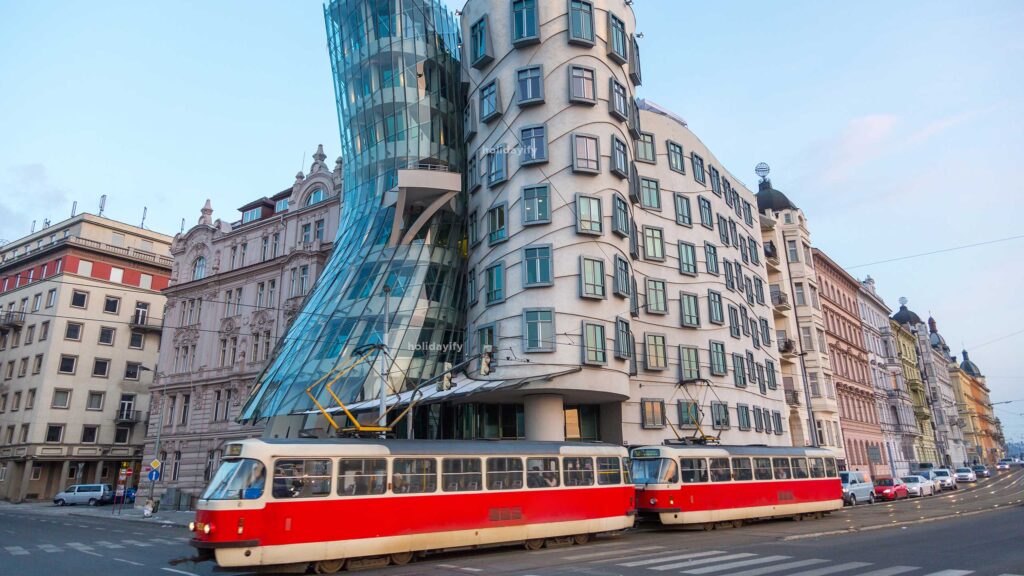
The Dancing House is the nickname given to a building designed by Croatian-born Czech architect Vlado Milunic in a co-operation with Canadian architect Frank Gehry. Built between 1994-1996, Dancing House is a strikingly modern contrast to Prague’s historic attractions.
The building is an example of a deconstructivist architecture, with an unusual shape – you can actually see a couple – woman and man dancing together, holding their hands, with a skirt that sways to the music. Words can’t describe it. You have got to see it!
Prague is home to a number of famous cultural attractions, many of which survived the violence and destruction of twentieth century Europe.
Main attractions include the Prague Castle, the Charles Bridge, Old Town Square, the Jewish Quarter, the Lennon Wall, and Petřín hill. Since 1992, the extensive historic centre of Prague has been included in the UNESCO list of World Heritage Sites.
Find Best Hotel For Your Trip
[adning id=”1813″]
Also explore Greece for holidays!
